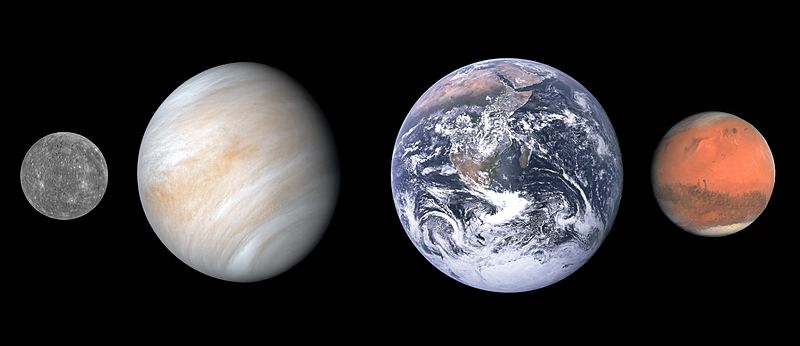Image: Terrestrial planet sizes2

Description: This diagram shows the approximate relative sizes of the terrestrial planets, from left to right: Mercury, Venus, Earth and Mars. Distances are not to scale. A terrestrial planet is a planet that is primarily composed of silicate rocks. The term is derived from the Latin word for Earth, "Terra", so an alternate definition would be that these are planets which are, in some notable fashion, "Earth-like". Terrestrial planets are substantially different from gas giants, which might not have solid surfaces and are composed mostly of some combination of hydrogen, helium, and water existing in various physical states. Terrestrial planets all have roughly the same structure: a central metallic core, mostly iron, with a surrounding silicate mantle. Terrestrial planets have canyons, craters, mountains, volcanoes and secondary atmospheres.
Title: Terrestrial planet sizes2
Credit: Mercury Globe-MESSENGER mosaic centered at 0degN-0degE.jpg PIA23791-Venus-NewlyProcessedView-20200608.jpg The Earth seen from Apollo 17.jpg OSIRIS Mars true color.jpg
Author: Mercury image: NASA/JHUAPL Venus image: NASA/JPL-Caltech Earth image: NASA/Apollo 17 crew Mars image: ESA/MPS/UPD/LAM/IAA/RSSD/INTA/UPM/DASP/IDA
Usage Terms: Public domain
License: Public domain
Attribution Required?: No
Image usage
The following 2 pages link to this image:

